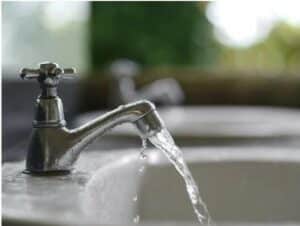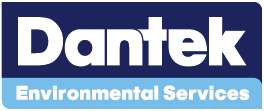Flushing of Infrequently Used Outlets
Flushing of Infrequently Used Outlets: Understanding the importance of regularly flushing infrequently used outlets to maintain water quality and minimize Legionella growth.
Welcome to our blog dedicated to responsible persons in the sports industry who are entrusted with ensuring the safety and well-being of visitors and staff within sports facilities. In this blog, we will shed light on a crucial aspect of facility management regarding Legionella control. Specifically, we will emphasize the importance of regularly flushing infrequently used outlets to maintain water quality and minimize the risk of Legionella growth.
 Let’s explore this essential practice and its significance in safeguarding the health of all individuals who utilize sports facilities.
Let’s explore this essential practice and its significance in safeguarding the health of all individuals who utilize sports facilities.
Understanding Legionella and Its Risks: Protecting Water Safety in Sports Facilities
- Legionella bacteria can pose a significant health risk when present in water sources, including the plumbing systems of sports facilities. These bacteria thrive in warm water environments and can lead to Legionnaires’ disease, a severe form of pneumonia. As responsible persons and staff members in the sports industry, it is crucial to prioritize Legionella control to prevent outbreaks and protect the health and safety of everyone using sports facilities.
The Role of Flushing Infrequently Used Outlets:
- One key aspect of Legionella control is understanding the importance of regularly flushing infrequently used outlet. These outlets, such as showers, irrigation systems during low usage, drench shower, and eye wash stations, often experience stagnant water conditions that create a favorable environment for bacterial growth. Flushing these outlets involves running water through them for several minutes to remove stagnant water, sediment, and any potential Legionella bacteria that may have accumulated. An infrequently used outlet is a outlet that is not used for a period equal to or greater than seven days. If legionella is suspected an increase of flushing will be required.
Why Regular Flushing Matters:
- Maintaining water quality and minimizing Legionella growth are two critical reasons why regular flushing of infrequently used outlets is essential in sports facilities.
- Water Quality Maintenance: Flushing infrequently used outlets helps maintain the overall water quality within the facility. By removing accumulated sediment, biofilm, and other contaminants, you ensure a fresh supply of water with optimal quality for visitors and staff.
- Minimizing Legionella Risk: Stagnant water provides an ideal breeding ground for Legionella bacteria. Regularly flushing infrequently used outlets disrupts these conditions and significantly reduces the risk of Legionella colonization in the facility’s plumbing system.
Effective Flushing Protocol:
- To ensure an effective Legionella control strategy, it is crucial to conduct a legionella risk assessment to identify infrequently used outlets within your sports facility. However, it’s important to recognize that footfall patterns can change over time. Therefore, regular internal surveys should be conducted to identify outlets that are used less frequently, such as restrooms, locker rooms, and areas with lower foot traffic. By prioritizing these outlets during the flushing process and updating your flushing records accordingly, you can effectively target areas that are more susceptible to Legionella growth.
Establishing a Flushing Schedule:
- Creating a regular flushing schedule for all identified outlets is a crucial step. Refer to HSG24 Part 2 guidelines (link to downloadable pdf at the end of this blog) and consider factors such as facility usage, occupancy rates, and water temperature when determining the frequency of flushing. Document the schedule and communicate it to the staff members responsible for flushing. Regularly review and update the schedule to accommodate any changes in facility usage.
Ensuring Adequate Flushing Duration:
- During the flushing process, it is essential to run water through the infrequently used outlets for an adequate duration. Weekly flushing for several minutes per outlet should generally suffice. This duration allows for the removal of stagnant water and any potential Legionella bacteria. Ensure that staff members responsible for flushing are aware of the proper duration and follow it consistently.
- Ensure that the running of water from outlets does not create an unnecessary amount of aerosol. If legionella is suspected or present submerse showers into a bucket of water or conceal them in a bag (Snipping the corner the allow water flow). If you require any advice regarding flushing infrequently used outlets with suspected or present legionella, please do not hesitate to contact our team at Dantek 01454 417 920
Monitoring and Documentation:
- Maintain detailed records of all flushing activities, including the dates, outlets flushed, and the duration of flushing. Regularly review and monitor these records to ensure compliance with the established protocol and track the effectiveness of your Legionella control measures. By documenting any changes or additions to infrequently used outlets and updating the flushing records accordingly, you can keep your Legionella control measures up to date and in line with the current usage patterns of your sports facility.
- At Dantek, we believe in providing value and support to our customers in the sports industry. That’s why we are pleased to offer our cutting-edge electronic logging system, completely free of charge to all our contracted customers. Our logbook allows you to record detailed reports of all flushing activities. You can easily track the dates of flushing, identify outlets that are currently listed as infrequently used, and set specific durations and frequencies for flushing. This ensures that your flushing protocol is properly documented, and you can keep a close eye on the maintenance of water quality within your facility. If you would like to book a free demo and see how our log book can help you, please call 01454 417 920 or e mail sales@dantek.co.uk
Remember, if you need assistance or further guidance regarding Legionella control in your sports facility, don’t hesitate to reach out to Dantek. Our team is available to help, email sales@dantek.co.uk or call 01454 417 920
For further guidance please refer to https://www.hse.gov.uk/pubns/priced/hsg274part2.pdf

 Taking action positive legionella results Taking immediate action upon receiving positive Legionella sample results is vital for the sports industry to maintain a safe and healthy environment. By following the outlined assessment and response steps, sports facilities can effectively mitigate the risk of Legionella colonization. Remember, Dantek are experts in Legionella prevention and control and can provide valuable assistance throughout the assessment and eradication process.
Taking action positive legionella results Taking immediate action upon receiving positive Legionella sample results is vital for the sports industry to maintain a safe and healthy environment. By following the outlined assessment and response steps, sports facilities can effectively mitigate the risk of Legionella colonization. Remember, Dantek are experts in Legionella prevention and control and can provide valuable assistance throughout the assessment and eradication process.